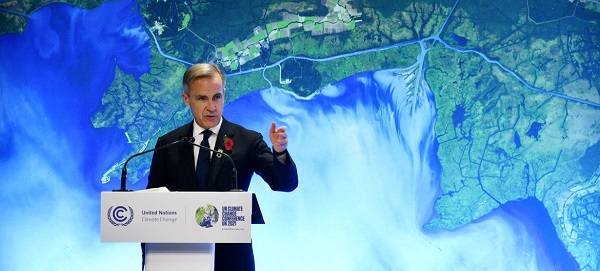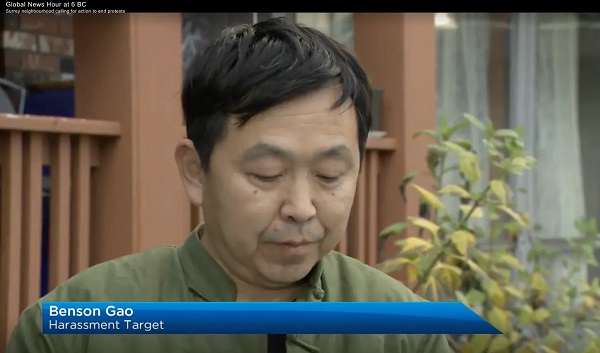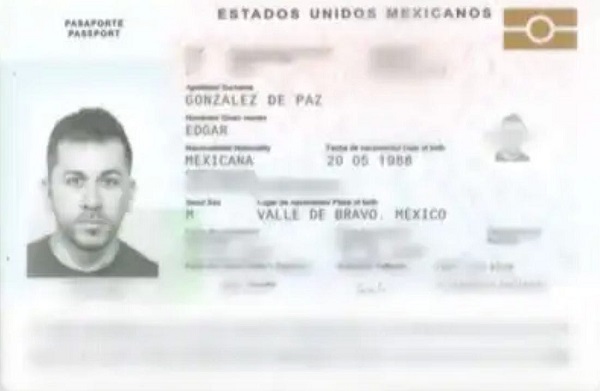Alberta
Premier Smith meets with Prime Minister Trudeau

Premier Danielle Smith met with Prime Minister Justin Trudeau on July 7 to discuss economic priorities.
Although the meeting was constructive, there are still several concerning issues that need to be resolved if Alberta and the federal government are to reach an agreement on an emissions-reduction plan that will simultaneously secure a reliable and affordable electricity grid, protect Alberta workers and drive economic growth in our energy sector for decades.
The positive news is the federal government has agreed to immediately form a bilateral working group with the Alberta government to work on an aligned framework to incentivize investment in carbon capture, utilization and storage as well as other emissions-reducing technologies.
This group would also work to develop a regulatory framework for the construction and use of small modular reactor technology in our province and to secure credit for carbon reduction through increased LNG exports to international markets. Article 6 in the Paris Accord allows for jurisdictions to receive credit for reducing emissions in other countries.
These are welcome developments.
However, the federal government has yet to formally recognize Alberta’s exclusive jurisdiction to set its own emissions-reduction targets and milestones on the path to a carbon-neutral energy sector and electricity grid by 2050.
They continue to set targets for a 42 per cent reduction in energy sector emissions by 2030 and a net-zero electricity grid by 2035. Both of these targets are unachievable, will drive billions of investment out of Alberta, massively increase electricity costs and result in the loss of tens of thousands of Alberta jobs.
We also understand the federal government is set to release its draft so-called ‘clean electricity’ regulations (CER) for feedback in the coming weeks, and which do not initially include a carve-out for provinces like Alberta, which needs more time to transition to a carbon-neutral power grid due to our reliance on natural gas-fired electricity generation.
It will be critical after this initial feedback period is complete that Ottawa grant Alberta’s requested CER carve-out until the working group has reached an agreement on decarbonizing our power grid that Albertans can afford and support.
Albertans have borne the significant cost of replacing all coal-fired electricity generation with natural gas seven years ahead of schedule, for which ratepayers have already paid billions in compensation and will continue to make these compensation payments through 2030.
Alberta has sovereign and exclusive constitutional jurisdiction to regulate our energy and electricity industries. This is non-negotiable.
We have asked the federal government to come to the table in good faith and to assess the realities of our power grid and the true magnitude of being the fifth-largest producer of oil and gas in the world.
If Ottawa does not recognize and support Alberta’s exclusive right to regulate these sectors of our economy, our province will have no choice but to use alternative policy options to protect our rights independent of federal interference.
Our sincere hope is that the newly formed federal and provincial working group will be able to facilitate an agreement that will align Ottawa’s efforts with the Alberta government’s Emissions Reduction and Energy Development Plan.
Failing to reach an agreement on these matters would be an unprecedented missed opportunity that would cost our country tens of billions in economic investment and countless jobs from coast to coast. We look forward to starting the working group as soon as possible.
Alberta
Federal budget: It’s not easy being green

From Resource Works
Canada’s climate rethink signals shift from green idealism to pragmatic prosperity.
Bill Gates raised some eyebrows last week – and probably the blood pressure of climate activists – when he published a memo calling for a “strategic pivot” on climate change.
In his memo, the Microsoft founder, whose philanthropy and impact investments have focused heavily on fighting climate change, argues that, while global warming is still a long-term threat to humanity, it’s not the only one.
There are other, more urgent challenges, like poverty and disease, that also need attention, he argues, and that the solution to climate change is technology and innovation, not unaffordable and unachievable near-term net zero policies.
“Unfortunately, the doomsday outlook is causing much of the climate community to focus too much on near-term emissions goals, and it’s diverting resources from the most effective things we should be doing to improve life in a warming world,” he writes.
Gates’ memo is timely, given that world leaders are currently gathered in Brazil for the COP30 climate summit. Canada may not be the only country reconsidering things like energy policy and near-term net zero targets, if only because they are unrealistic and unaffordable.
It could give some cover for Canadian COP30 delegates, who will be at Brazil summit at a time when Prime Minister Mark Carney is renegotiating his predecessor’s platinum climate action plan for a silver one – a plan that contains fewer carbon taxes and more fossil fuels.
It is telling that Carney is not at COP30 this week, but rather holding a summit with Alberta Premier Danielle Smith.
The federal budget handed down last week contains kernels of the Carney government’s new Climate Competitiveness Strategy. It places greater emphasis on industrial strategy, investment, energy and resource development, including critical minerals mining and LNG.
Despite his Davos credentials, Carney is clearly alive to the fact it’s a different ballgame now. Canada cannot afford a hyper-focus on net zero and the green economy. It’s going to need some high octane fuel – oil, natural gas and mining – to prime Canada’s stuttering economic engine.
The prosperity promised from the green economy has not quite lived up to its billing, as a recent Fraser Institute study reveals.
Spending and tax incentives totaling $150 billion over a decade by Ottawa, B.C, Ontario, Alberta and Quebec created a meagre 68,000 jobs, the report found.
“It’s simply not big enough to make a huge difference to the overall performance of the economy,” said Jock Finlayson, chief economist for the Independent Contractors and Business Association and co-author of the report.
“If they want to turn around what I would describe as a moribund Canadian economy…they’re not going to be successful if they focus on these clean, green industries because they’re just not big enough.”
There are tentative moves in the federal budget and Climate Competitiveness Strategy to recalibrate Canada’s climate action policies, though the strategy is still very much in draft form.
Carney’s budget acknowledges that the world has changed, thanks to deglobalization and trade strife with the U.S.
“Industrial policy, once seen as secondary to market forces, is returning to the forefront,” the budget states.
Last week’s budget signals a shift from regulations towards more investment-based measures.
These measures aim to “catalyse” $500 billion in investment over five years through “strengthened industrial carbon pricing, a streamlined regulatory environment and aggressive tax incentives.”
There is, as-yet, no commitment to improve the investment landscape for Alberta’s oil industry with the three reforms that Alberta has called for: scrapping Bill C-69, a looming oil and gas emissions cap and a West Coast oil tanker moratorium, which is needed if Alberta is to get a new oil pipeline to the West Coast.
“I do think, if the Carney government is serious about Canada’s role, potentially, as an global energy superpower, and trying to increase our exports of all types of energy to offshore markets, they’re going to have to revisit those three policy files,” Finlayson said.
Heather Exner-Pirot, director of energy, natural resources and environment at the Macdonald-Laurier Institute, said she thinks the emissions cap at least will be scrapped.
“The markets don’t lie,” she said, pointing to a post-budget boost to major Canadian energy stocks. “The energy index got a boost. The markets liked it. I don’t think the markets think there is going to be an emissions cap.”
Some key measures in the budget for unlocking investments in energy, mining and decarbonization include:
- incentives to leverage $1 trillion in investment over the next five years in nuclear and wind power, energy storage and grid infrastructure;
- an expansion of critical minerals eligible for a 30% clean technology manufacturing investment tax credit;
- $2 billion over five years to accelerate critical mineral production;
- tax credits for turquoise hydrogen (i.e. hydrogen made from natural gas through methane pyrolysis); and
- an extension of an investment tax credit for carbon capture utilization and storage through to 2035.
As for carbon taxes, the budget promises “strengthened industrial carbon pricing.”
This might suggest the government’s plan is to simply simply shift the burden for carbon pricing from the consumer entirely onto industry. If that’s the case, it could put Canadian resource industries at a disadvantage.
“How do we keep pushing up the carbon price — which means the price of energy — for these industries at a time when the United States has no carbon pricing at all?” Finlayson wonders.
Overall, Carney does seem to be moving in the right direction in terms of realigning Canada’s energy and climate policies.
“I think this version of a Liberal government is going to be more focused on investment and competitiveness and less focused around the virtue-signaling on climate change, even though Carney personally has a reputation as somebody who cares a lot about climate change,” Finlayson said.
“It’s an awkward dance for them. I think they are trying to set out a different direction relative to the Trudeau years, but they’re still trying to hold on to the Trudeau climate narrative.”
Pictured is Mark Carney at COP26 as UN Special Envoy on Climate Action and Finance. He is not at COP30 this week. UNRIC/Miranda Alexander-Webber
Resource Works News
Alberta
ChatGPT may explain why gap between report card grades and standardized test scores is getting bigger

From the Fraser Institute
By Paige MacPherson and Max Shang
In Alberta, the gap between report card grades and test/exam scores increased sharply in 2022—the same year ChatGPT came out.
Report card grades and standardized test scores should rise and fall together, since they measure the same group of students on the same subjects. But in Alberta high schools, report card grades are rising while scores on Provincial Achievement Tests (PAT) and diploma exams are not.
Which raises the obvious question—why?
Report card grades partly reflect student performance in take-home assignments. Standardized tests and diploma exams, however, quiz students on their knowledge and skills in a supervised environment. In Alberta, the gap between report card grades and test/exam scores increased sharply in 2022—the same year ChatGPT came out. And polling shows Canadian students now rely heavily on ChatGPT (and other AI platforms).
Here’s what the data show.
In Alberta, between 2016 and 2019 (the latest year of available comparable data), the average standardized test score covering math, science, social study, biology, chemistry, physics, English and French language arts was just 64, while the report card grade 73.3—or 14.5 per cent higher. Data for 2020 and 2021 are unavailable due to COVID-19 school closures, but between 2022 and 2024, the gap widened to 20 per cent. This trend holds regardless of school type, course or whether the student was male or female. Across the board, since 2022, students in Alberta high schools are performing significantly better in report card grades than on standardized tests.
Which takes us back to AI. According to a recent KPMG poll, 73 per cent of students in Canada (high school, vocational school, college and university) said they use generative AI in their schoolwork, an increase from the previous year. And 71 per cent say their grades improved after using generative AI.
If AI is simply used to aid student research, that’s one thing. But more than two-thirds (66 per cent) of those using generative AI said that although their grades increased, they don’t think they’re learning or retaining as much knowledge. Another 48 per cent say their “critical thinking” skills have deteriorated since they started using AI.
Acquiring knowledge is the foundation of higher-order thinking and critical analysis. We’re doing students a deep disservice if we don’t ensure they expand their knowledge while in school. And if teachers award grades, which are essentially inflated by AI usage at home, they set students up for failure. It’s the academic equivalent of a ski coach looking at a beginner and saying, “You’re ready for the black diamond run.” That coach would be fired. Awarding AI-inflated grades is not fair to students who will later struggle in college, the workplace or life beyond school.
Finally, the increasing popularity of AI underscores the importance of standardized testing and diploma exams. And parents knew this even before the AI wave. A 2022 Leger poll found 95 per cent of Canadian parents with kids in K-12 schools believe it’s important to know their child’s academic performance in the core subjects by a fair and objective measure. Further, 84 per cent of parents support standardized testing, specifically, to understand how their children are doing in reading, writing and mathematics. Alberta is one of the only provinces to administer standardized testing and diploma exams every year.
Clearly, parents should oppose any attempt to reduce accountability and objective testing in Alberta schools.
-

 Daily Caller6 hours ago
Daily Caller6 hours agoUS Nuclear Bomber Fleet Shares Fence With Trailer Park Linked To Chinese Intel-Tied Fraudster
-

 espionage5 hours ago
espionage5 hours agoChinese-Owned Trailer Park Beside U.S. Stealth Bomber Base Linked to Alleged Vancouver Repression Case
-

 Alberta2 days ago
Alberta2 days agoSchool defunding petition in Alberta is a warning to parents
-

 Daily Caller4 hours ago
Daily Caller4 hours agoLaura Ingraham Presses Trump On Allowing Flood Of Chinese Students Into US
-

 Agriculture2 days ago
Agriculture2 days agoBovaer Backlash Update: Danish Farmers Get Green Light to Opt Out as UK Arla Trial Abruptly Ends!
-

 International2 days ago
International2 days agoBBC boss quits amid scandal over edited Trump footage
-

 Daily Caller2 days ago
Daily Caller2 days agoMcKinsey outlook for 2025 sharply adjusts prior projections, predicting fossil fuels will dominate well after 2050
-

 Crime2 hours ago
Crime2 hours agoCBSA Bust Uncovers Mexican Cartel Network in Montreal High-Rise, Moving Hundreds Across Canada-U.S. Border






